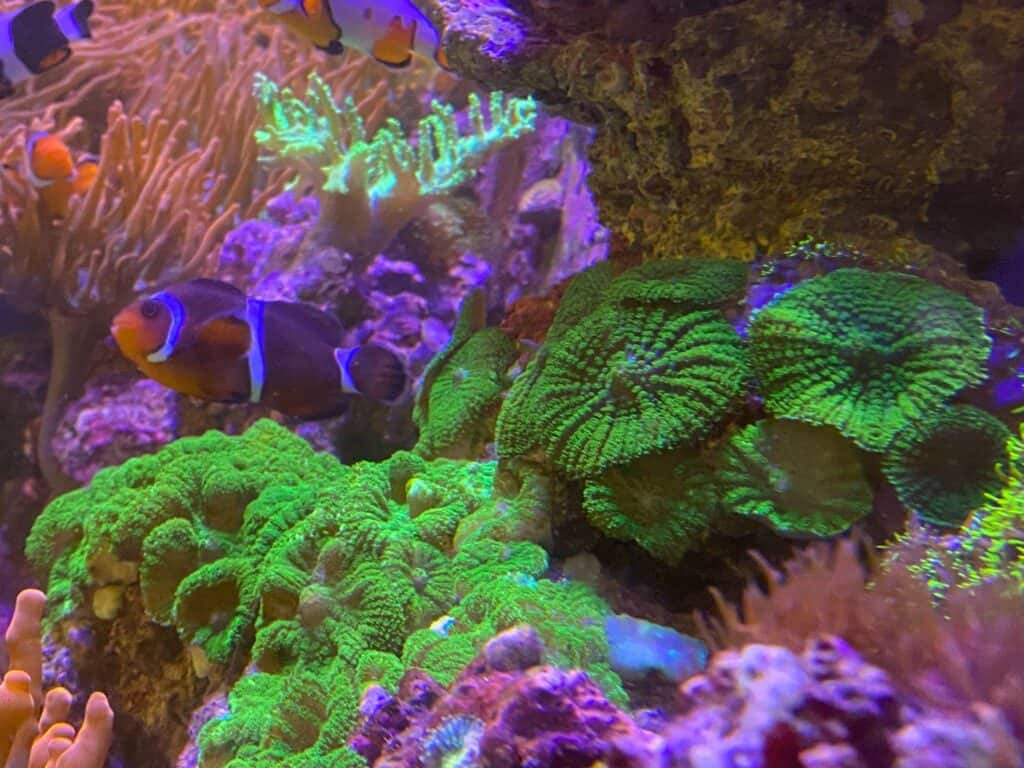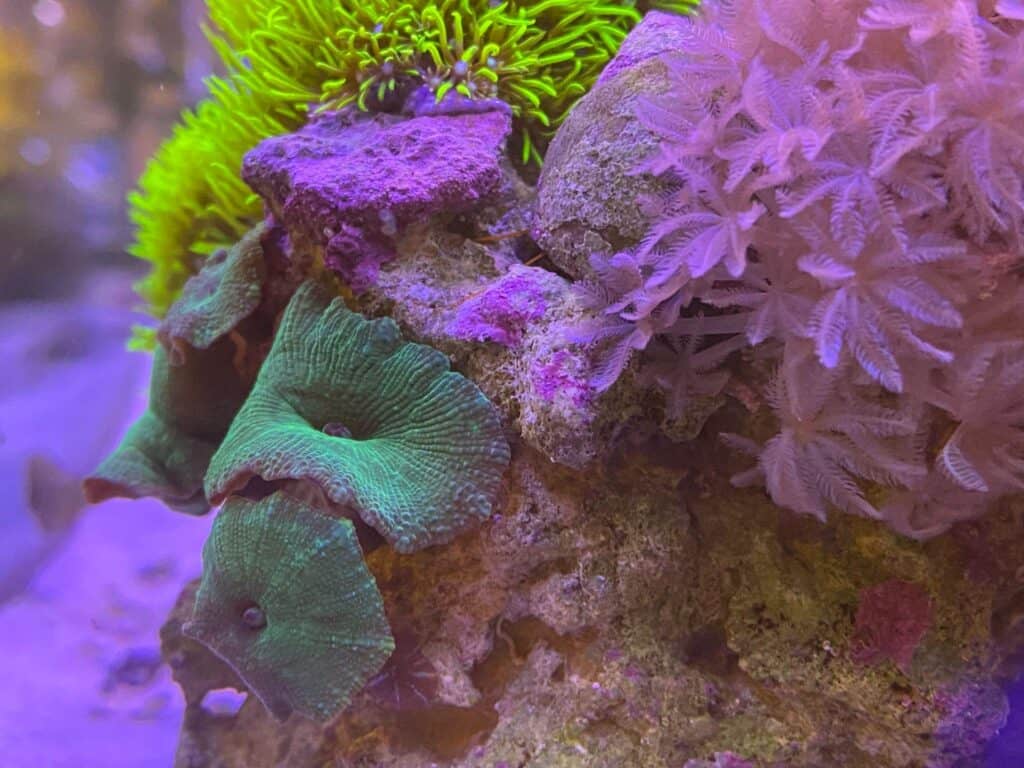Mushroom Corals for Sale in New Jersey
By Julien Napoli

Kingdom: Animalia
Phylum: Cnidaria
Class: Hexacorallia
Order: Corallimorpharia
Requirements:
- specific gravity: 1.023-1.025
- Calcium: 400-450 ppm
- Alkalinity: 8-11 DKH
- Magnesium: 1200-1400 ppm
- Nitrate: 10-25 ppm
- Phosphate: 0.07-0.16 ppm
Mushroom Corals are great for beginners because they are easy to care for, grow quickly, are hardy, and come in many colors. They are native to all tropical seas and may commonly be spotted while snorkeling in places like the Indo-Pacific and Caribbean. They live in shallow water at less than ten meters depth. Reproduction occurs sexually, via polyp division, petal laceration, or budding. Either solitary or colonial, these corals are capable of benthic locomotion, that is to say, they can move. By inflating and deflating tissues in succession, Mushrooms slowly crawl along the sand, secreting mucus as they go which is used to slide on. This makes it particularly difficult to glue a mushroom coral in place. The desired location of a mushroom may be adjustable: place the mushroom on a surface it can attach itself to and hopefully it will do so, but do not be surprised if it decides to move. Since they are capable of movement they have the ability to throw off accumulated sediment on their surface. It should be noted, however, that most of the species sold in the hobbyist trade are smaller and less dome-shaped than their ocean-faring counterparts, and thus have less ability to function as such. One should therefore carefully place these corals in their aquarium and seek an area with less direct current and detritus build up. Moreover, note that they are in fact animals – not plants as those unfamiliar with corals may believe.

Mushrooms are a form of soft coral and do not produce a hard, calcium carbonate skeleton, thus propagation is easy. It is for this reason that calcium and magnesium are less critical for Mushrooms than some other coral species. Dosing these minerals is unnecessary unless other corals requiring nutrients are present in the tank, however it is recommended, as it will enhance growth and health. Additionally, Iodine and trace elements are essential. Furthermore, these corals do well with higher nitrate levels (which they consume), so a busy tank is a great place to put them. Feeding is unnecessary, yet spot feeding with a high protein food – their preferred diet – such as brine shrimp, will increase color and grow them faster, but beware, taking note of your system’s stability as well as its ability to break down organics before feeding too heavily. The recommended food dose is two times per week.
Mushroom corals survive in a natural environment at the sand-bottom of a reef system so their required light levels are low–moderate. Ensure to place other corals out of the way of your mushrooms or put them on a separate rock altogether; they have a semi-aggressive temperament and will fend off other corals by stinging them. As stated, they grow quickly and so may overtake other species. Species of different genera may damage each other too, so mixing them is not always recommended.

Mushrooms are a fantastic place to start if you are just getting into keeping a reef tank, but they also remain alluring to the experienced aquarist due to their dazzling colors and beautiful, bulbous look. As they say, “an apple a day keeps the doctor away”. For us aquarists, we retort, “a mushroom a day makes the reef say hurray!” At Absolutely Fish we have a wide variety of Mushrooms to select from, so if you are already a ‘reefer’ or are interested in becoming one, please visit our store to consider the plethora of options that we offer.
